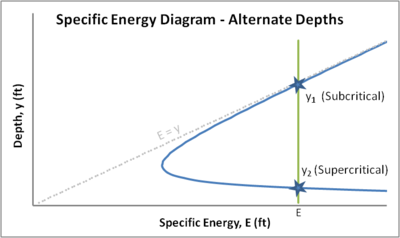A preview story of our next publication (May 28th)
In our previous discussion we looked at the theory behind traffic flow patterns in a network and piped water systems. Our theory included an overview of how the geometry and mechanisms of flow (velocity and distribution) between the two systems are similar. It is important to begin to define mathematically the variables and resultants of both and how these similarities go beyond superficial and viewable parameters.
In hydraulics the flow of water is classified using a Reynolds number. This is a constructed variable which weighs the impact of a flow’s velocity and composition and the material of the conveyance pipe in order to determine a friction factor. Click. Click. Click. I just wanna read about food trucks and new buildings. I promise this is getting somewhere. The friction factor is an important variable in flow parameters. It defines how much energy is lost when a fluid goes through a pipe or any valve, tee, cross, bend, etc. When a flow begins to slow down, dwindle, or otherwise convert from a supercritical to subcritical flow (sudden hydraulic jump) it is directly attributable to the loss of energy. The reason why water from a reservoir 20 miles away eventually comes out of your shower head with adequate pressure is because the network that conveys this water is adequately designed.
What makes water flow into one pipe at a certain rate and through another pipe at a different rate? Is it all dependent on the size of the pipe? Not quite, in a pipe network the amount of flow does not find equilibrium based on a pipe size/flow ratio but rather all pipes in a network and paths will find equilibrium in how much friction energy loss they experience. This is important because this is the mechanism in which water determines what its direction of least resistance is.
Now we come to transportation networks. The current method for determining how well a network is operating and how well an improvement will work views the network as several independent objects which direct flow based on their capacity. This is materially flawed because it does not understand that when a new highway improvement is completed users that used to find the friction energy (congestion) with that route to be slightly more than an alternate route will now make a decision whether the new improved path is now better. This is induced traffic, something that transportation models still can’t anticipate. Because each road user is very similar to each unit mass of water it is not a large leap to view this dynamic similarly. Therefore, instead of viewing a network based on capacity and route widenings, each network improvement should be analyzed to determine the new equilibrium friction factor. In other words, people like water will follow a path of least resistance.
 By creating an appropriate mathematical model the network designer can also analyze the system not only at a point and place peak, but at any time and geography of the day. This will help solve the issue of over sized roads, if properly done, which go completely under used for a majority of a day.
By creating an appropriate mathematical model the network designer can also analyze the system not only at a point and place peak, but at any time and geography of the day. This will help solve the issue of over sized roads, if properly done, which go completely under used for a majority of a day.
In fluids the energy in a system is defined as;
Total Energy = Potential Energy(gravitational energy) + Kinetic Energy (movement energy) + Dynamic Energy (pressure energy) – Friction Loss (energy loss from point A to B)
Potential energy has no real implication in traffic flow as the elevation has no sizable impact on transportation network operation. Kinetic and dynamic energy however are very relevant to transportation analysis. The velocity of vehicle travel will directly increase the total quantity and capacity of the road and, as in fluids, will increase the impedance friction that occurs. Why? At faster velocities traffic has more difficult stopping and accelerating, similar to fluids, and gaps between each user is increased.
Dynamic energy becomes an interesting question. In fluid flow it defines the characteristics of the fluid that is in motion and the pressure energy contained with in it. In a transportation setting this dynamic is similar to the composition of the vehicles within a traffic flow and a measure of the traffics linear or chaotic nature. If users are continuously shifting in and out of lanes due to multiple point exits and entrances then the relative capacity and friction caused is effected compared to a traffic flow in which everyone remains in their lanes. This has a huge implication on how effective a system is in moving users.
With this definition we can now view Bernoulli’s fluid equation in terms of transportation;
Total Energy = (v^2)/2 + (chaotic flow factor/static factor) – Friction Loss between two points
The total energy is important to understand as it will indicate when a traffic flow will go from supercritical (free flow) to subcritical (congested flow) patterns. Before we delve into that issue we must understand the friction loss and the variables that turn a stable flow into a deteriorating flow. It is also important to understand friction loss as this is the element which all travel ways/paths within a system will form equilibrium to, not capacity.
Our analysis continues with the mechanisms that govern friction loss…

